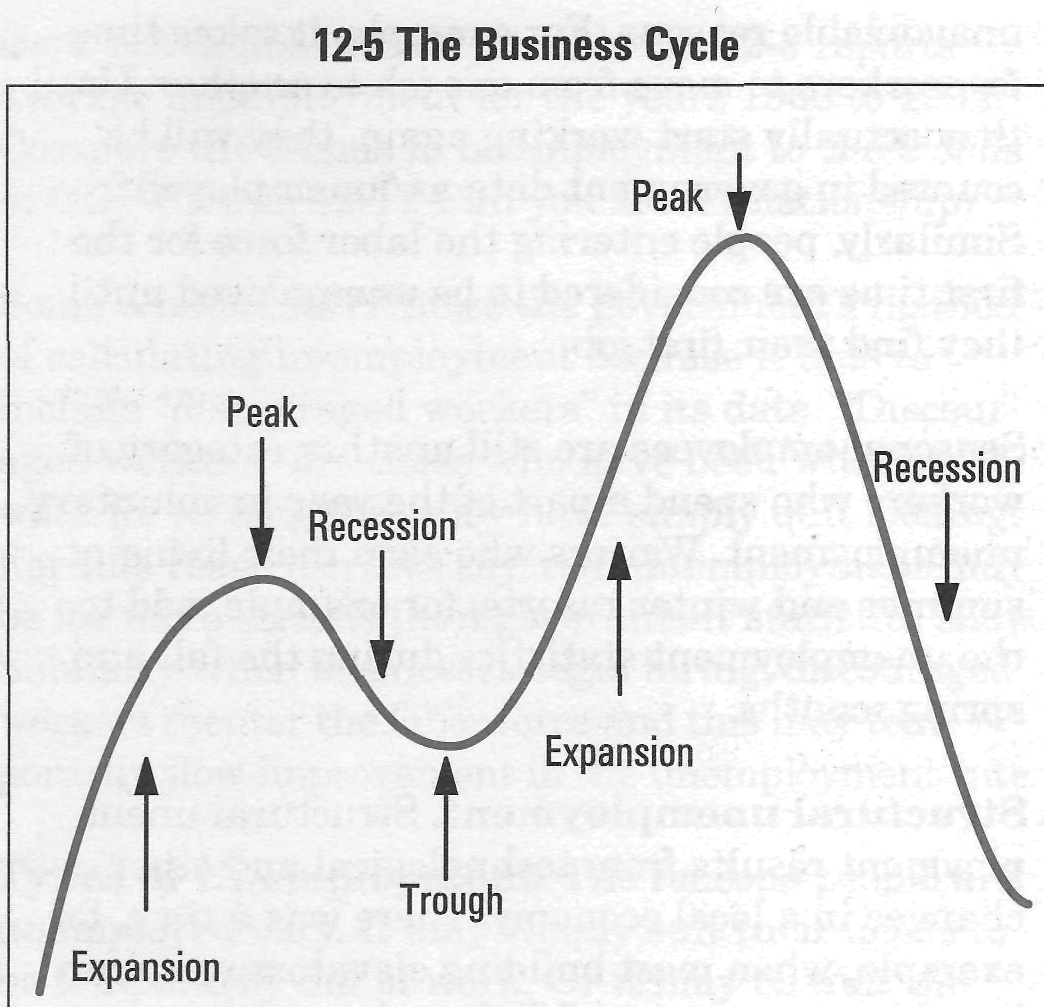
12.4. What Causes Business Cycles?

Expansion. The U.S. economy and other market systems have a remarkable ability to recuperate. After some time, the economy begins to recover. It enters the expansion phase of the business cycle. During an expansion, business and consumer spending begin to increase. Sensing that conditions are about to improve, business begins to increase production. Unemployment declines as additional workers are hired. This, in turn, leads to higher levels of consumer spending and still further expansion of employment, output, and consumption. Eventually the cycle reaches a peak once again. Most expansions last at least three years. The largest peacetime expansion in U.S. history was between November 1982 and June 1990.

For many years economists struggled to find a theory that would explain all business cycles. In one widely publicized effort, the 19th-century British economist W. S. Jevons linked them to sunspots. (Variations in the sun's atmosphere that may be associated with storms on the Earth.) This idea might not have been as farfetched as it sounds. According to Jevons' calculations, the appearance of sunspots coincided with crop failures and recessions. But Jevons' conclusions were based on faulty astronomical data, and so other explanations had to be found.
To explain business cycle fluctuations, today's economists often distinguish between external and internal events. External events occur outside the economic system; internal events occur within the economy itself. Unfortunately these factors do not fully explain the causes of all business cycles.
External factors. External factors affect the economy much the same way a push sets a rocking horse in motion. Examples would include inventions and innovations, wars, international trade agreements, and other significant political and social events.
• Inventions and innovations. Major changes in technology, such as the development of the automobile, the airplane and the computer, have led to bursts of business activity and investment. This, in turn, has been followed by increased employment opportunities and periods of expansion.
• Wars and political events. Events often affect the business cycle. The rise of Nazi Germany and the outbreak of World War n triggered American rearmament. As the nation rebuilt its armed forces, the Great Depression came to an end, and the economy entered a period of prosperity. In more recent years, the Arab oil boycott of the 1970s caused a downturn in the economy.
Internal factors. Internal events in the economy can start an expansion or contraction of the business cycle. Three of these internal factors are consumption, business investment, and government activity.
• Consumption, Business firms try to provide consumers the goods and services they want. When consumer spending increases, business firms hire more help and increase their production level. As production, employment, and sales increase, the business cycle enters a period of expansion. When consumer spending decreases, the opposite occurs. Production is reduced, workers are laid off, and the economy enters a period of recession.
• Business investment. Investment in capital goods-like plant and tools and equipment-creates jobs, thereby increasing consumer purchasing power. The increase in spending generated by the initial increase in investment leads to still further investment, consumption, and total production. When investment decreases, the opposite occurs and the economy enters a period of contraction.
• Government activity. Government policies can affect the business cycle in two ways. One is through fiscal policy - the use of its power to tax and spend. The other is through monetary policy - regulating the supply of money and credit in circulation.
Stabilizing the economy. Since the days of the Great Depression, the federal government has tried to stabilize the economy-reduce the effects of ups and downs in the business cycle. In the Employment Act of 1946 Congress stated, "It is the continuing policy an responsibility of the federal government. .. to promote maximum employment, production, and purchasing power." To achieve these goals the government relies on two sets of "tools" or strategies: fiscal policy and monetary policy.
